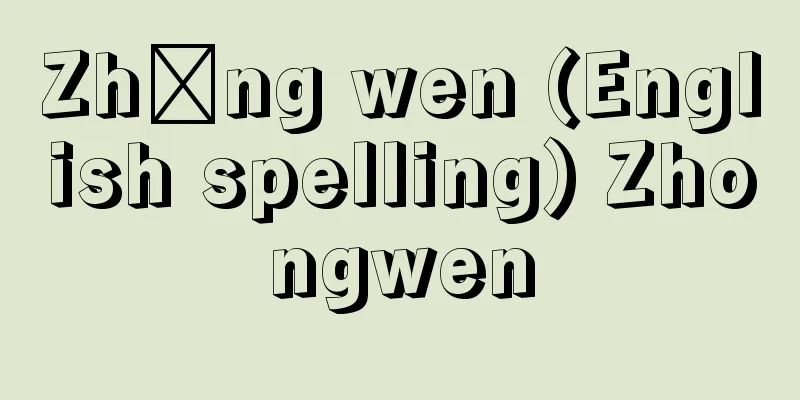Tokugawa Iemitsu

|
The third Shogun of the Edo Shogunate (in office 1623-51). Hidetada's second son (his eldest son Nagamaru died at the age of two). His mother was Hidetada's wife, Azai Ogo. He was born on July 17, 1600, in the Nishinomaru of Edo Castle. His childhood name was Takechiyo. He was raised by his wet nurse, Kasuga no Tsubone (Inaba Shigemichi's adopted daughter, O-Fuku). In 1620 (Genwa 6), he was made Shosanmi Gon Dainagon. He then came of age and took the name Iemitsu. In 1623, he went to Kyoto around the same time as Hidetada and was proclaimed Shogun. In 1626 (Kan'ei 3), he went to Kyoto again and became the Left Minister with the rank of Junior First Rank. In 1634, he went to Kyoto a third time and was appointed as the Grand Minister of State, but declined the position. He died on April 20, 4th year of Keian, in the Honmaru of Edo Castle. His posthumous name was Daiyuin. He was buried at Nikko Taiyubyo (now Futarasan Shrine). His wife was Nakanomarudono, the daughter of the Chancellor Takatsukasa Nobufusa. [Akira Takagi] Succession to the position of Shogun and military ruleThe historical significance of his 20-year reign since 1632 (Kan'ei 9), when he took control of the shogunate following the death of the great shogun Hidetada, is that he stabilized the power of the shogun and established a tradition of political authority. At the time, the system of primogeniture had not yet been established, and the succession of the shogun meant a crisis for the shogunate's power. Soon after Hidetada's death, Iemitsu also stripped his younger brother, Tokugawa Tadanaga (550,000 koku), lord of Sunpu Castle, of his title, and drove him to suicide. It is said that Ieyasu, who received a direct appeal from Kasuga no Tsubone to decide on Iemitsu as the successor to the shogun, had been in the process of selecting Tadanaga due to Hidetada and his wife's partiality. Having thus eliminated his rivals, Iemitsu gave preferential treatment to old vassals from Hidetada's time as senior councilors, while appointing the head of his close aide, the hatamoto group, to the newly established position of young councilor, and in 1634 defined the duties of these positions to strike a balance between the old and new senior vassals. In terms of policy, for the time being, the government continued to follow the previous dynasty's example by strengthening trade controls and the ban on Christianity, and in 1639 it banned Portuguese ships from traveling to Japan, completing the country's isolation. It then established the Magistrate of Temples and Shrines (Bugyo) and worked to improve systems, such as establishing rules for the Hyojosho (Councillor's Office). It continued to take a militaristic approach to the various daimyo, as seen in the removal of Kato Tadahiro, lord of Kumamoto Castle, from his position in 1632, and the 1635 revision of the Buke Shohatto (Laws for the Buke Family) established for the first time the system of alternate attendance. As with the previous dynasty, assistance in the construction of castles was also allocated to the various daimyo, following fires in the Nishimaru of Edo Castle in 1634 and the Honmaru in 1639. These burdens were ultimately passed on to the peasants, and peasant uprisings began to occur sporadically during Iemitsu's reign, such as the 1633 rebellion at Dewa Shiraiwa (Sagae city, Yamagata prefecture), but it was the Shimabara Rebellion, which took place from October 1637 to New Year's the following year, which exploded in a major way due to religious issues. This rebellion was put down with a strategy of attrition by Matsudaira Nobutsuna, a senior councilor and former aide to Iemitsu, who was sent as commander-in-chief of the suppression forces, and this resulted in increased political authority for Iemitsu's close aides and intensified crackdowns on Christianity, but on the other hand it forced the shogunate leaders to reconsider the hard-line, militaristic approach towards daimyo and peasants that had been adopted since the beginning of the shogunate. [Akira Takagi] A shift away from militarismConcern over the exhaustion of feudal lords' finances can be seen as early as the increase in the total stipends of the hatamoto guards in 1633 (Kan'ei 10) and the repeated enforcement of thrift after the Hatamoto Law of 1635, but the Shimabara Rebellion was followed by the Kan'ei famine of 1641-42, which led to the reconstruction of the rural areas, which were the basis of the feudal lords' finances, becoming a serious issue. One result of this was the Keian Edict issued to farmers in 1649 (Keian 2), which aimed to enforce the so-called feudal hierarchical order by enforcing diligence and thrift, and had something in common with the thrift edicts and public morals control edicts of the same period that were targeted at samurai and townspeople, and marked a shift in the shogunate from militarism. Underpinning the above trend was Iemitsu's almost obsessive worship of Toshogu Shrine. Iemitsu, who appears to have believed himself to be the reincarnation of Ieyasu, carried out major renovations of Toshogu Shrine between 1634 and 1636, and personally visited Nikko 10 times to pray at the shrine. In 1646 (the 3rd year of the Shoho era), he requested the Imperial Court to institutionalize the dispatch of Reiheishi (regular envoys), and worked to disseminate the authority of Toshogu Daigongen, successfully placing the foundation of the shogunate's authority on Toshogu Shrine. [Akira Takagi] "The Biography of Tokugawa Iemitsu by Hirono Saburo (1963, Toshogu Shrine Office)" "Portrait of Tokugawa Iemitsu" Reproduction (partial) owned by the Historiographical Institute, University of Tokyo © Historiographical Institute, University of Tokyo "> Tokugawa Iemitsu Note: In the diagram, biological children are indicated with | and adopted children with ‖ ©Shogakukan Tokugawa family (Shogun family) / Brief family tree Source: Shogakukan Encyclopedia Nipponica About Encyclopedia Nipponica Information | Legend |
|
江戸幕府第3代将軍(在職1623~51)。秀忠(ひでただ)の第2子(長子長丸は2歳で幼死)。母は秀忠夫人浅井氏お江(ごう)。慶長(けいちょう)9年7月17日江戸城西丸(にしのまる)で生まれる。幼名は竹千代(たけちよ)。乳母(めのと)の春日局(かすがのつぼね)(稲葉重通(いなばしげみち)養女お福(ふく))に育てられる。1620年(元和6)正三位(しょうさんみ)権大納言(ごんだいなごん)。続いて元服して家光と名のる。1623年秀忠と前後して上洛(じょうらく)し将軍宣下(せんげ)を受ける。1626年(寛永3)再度上洛し従一位(じゅいちい)左大臣。1634年三度上洛し太政大臣(だいじょうだいじん)に任じられたが辞退。慶安(けいあん)4年4月20日江戸城本丸で没。法号は大猷院(だいゆういん)。日光大猷廟(たいゆうびょう)(現二荒山(ふたらさん)神社内)に葬る。夫人は関白鷹司信房(たかつかさのぶふさ)の娘中ノ丸殿(なかのまるどの)。 [高木昭作] 将軍襲職・武断政治大御所秀忠の死により幕府の実権を握った1632年(寛永9)以来20年間の治世は、将軍権力を安定させ政治的権威の伝統化をもたらした点に歴史的意義が認められる。長子相続が確立していなかった当時は、将軍の代替わりは幕府権力の危機であり、家光も秀忠の死の直後に実弟の駿府(すんぷ)城主徳川忠長(ただなが)(55万石)を改易し自殺に追いやっている。秀忠夫妻の偏愛によって忠長に定まりかけていた将軍後嗣(こうし)が、春日局の直訴を受けた家康の裁定で家光に定まったという話が伝わっているが、こうして競争者を滅ぼした家光は、秀忠時代の老臣を老中として優遇する一方で、側近の旗本組の頭(かしら)(親衛隊長)を新設の若年寄に任命し、1634年それらの職掌を定めて新旧重臣のバランスをとった。 政策上では、当面、前代を踏襲して貿易統制やキリシタン禁制を強化し、1639年ポルトガル船の日本渡航を禁止して鎖国を完成させた。ついで寺社奉行(ぶぎょう)を設置し、さらに評定所(ひょうじょうしょ)の規則を定めるなど制度の整備に努めた。諸大名に対しては1632年の熊本城主加藤忠広の改易など依然武断主義で臨み、また1635年改定の武家諸法度(ぶけしょはっと)で初めて参勤交代の制度を定めた。御手伝普請(おてつだいぶしん)も1634年江戸城西丸、1639年本丸の火災などもあり、前代同様に諸大名に割り当てられた。こうした負担は結局のところ農民に転嫁され、1633年出羽(でわ)白岩(しらいわ)(山形県寒河江(さがえ)市)の一揆(いっき)など家光の代に入ると農民一揆が散発し始めたが、宗教問題と絡んで大爆発したのが1637年10月から翌年正月の島原の乱であった。この乱は、鎮圧軍の総大将として派遣された家光の側近あがりの老中松平信綱(まつだいらのぶつな)の持久戦策によって鎮定され、家光の側近グループの政治的権威を高めるとともに、キリシタン取締りの強化を結果したが、他方では幕初以来の大名・農民に対する武断主義に基づく強硬路線の再検討を幕府首脳に余儀なくさせた。 [高木昭作] 武断主義からの転換領主財政の疲弊に対する関心は早く1633年(寛永10)の旗本番士への総加増や1635年の旗本法度以降繰り返された倹約の強制にもみられるが、島原の乱に続いて起きた1641~42年の寛永(かんえい)の飢饉(ききん)は、領主財政の基盤である農村の再建が本格的課題となるに至った。その一つの帰結である1649年(慶安2)に農民に対して出された慶安御触書(けいあんのおふれがき)は、勤勉節倹の強制を通じていわゆる封建的階層秩序の貫徹を目ざす点で、武士・町人などを対象としたこの期の倹約令・風俗取締令と共通性があり、武断主義からの幕政転換を示すものであった。以上の傾向を裏打ちしたのが家光の偏執狂的ともいえる家康=東照宮(とうしょうぐう)崇拝であった。自身を家康の生まれ変わりと信じていたふしのある家光は、1634年から1636年にかけて東照宮の大改築を行い、自身も10回にわたって日光(にっこう)に社参。1646年(正保3)には朝廷に要請して例幣使(れいへいし)発遣を制度化するなど東照大権現(だいごんげん)の権威の浸透に努め、幕府の権威の基礎を東照宮に置くことに成功した。 [高木昭作] 『広野三郎著『徳川家光公伝』(1963・東照宮社務所)』 「徳川家光画像」 東京大学史料編纂所所蔵模写(部分)©東京大学史料編纂所"> 徳川家光 注:図では実子を|で、養子を‖で示した©Shogakukan"> 徳川氏(将軍家)/略系図 出典 小学館 日本大百科全書(ニッポニカ)日本大百科全書(ニッポニカ)について 情報 | 凡例 |
Recommend
Ooyamazakura - Ooyamazakura
A deciduous tall tree of the Rosaceae family (APG...
Phimai Temple - Phimai Temple
The ruins of a Khmer temple in Phimai, 270 km nort...
Nawa [town] - Nawa
A former town in Saihaku District, western Tottori...
Arbitration - Arbitration
The term "arbitration" is generally use...
Eesti Noukogude Sotsialistik Vabariik
…Official name = Republic of EstoniaEesti Vabarii...
Whale - Whale
A general term for aquatic mammals belonging to th...
Kara Kyrgyzstan [Autonomous Region] - Kara Kyrgyzstan
...Kyrgyz factory workers were also trained, and ...
In Tadeini (English spelling)
…The oldest carvings, of elephants and hippos, ar...
Almatia - Almatia
…The Cornucopia has its origins in an episode fro...
Diligence - Gonzou
Year of death: Tencho 4.5.8 (827.6.5) Year of birt...
Inheritance of the family headship
This refers to an inheritance in which one person...
McCarthy, JR
...refers to the attacks on political opponents a...
Sekinomiya [town] - Sekinomiya
An old town in Yabu County, northwest of Hyogo Pre...
Arc sine function
...There are an infinite number of x 's for w...
Intratubular digestion - Kannaishouka
…It is believed that food-containing vacuoles (fo...








![Yanbian Koreans [Autonomous Prefecture]](/upload/images/67cfb668962a4.webp)
